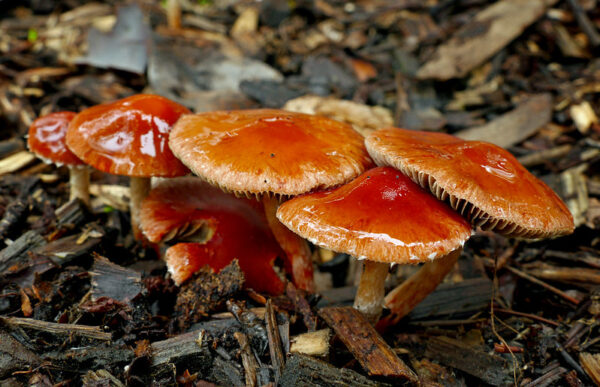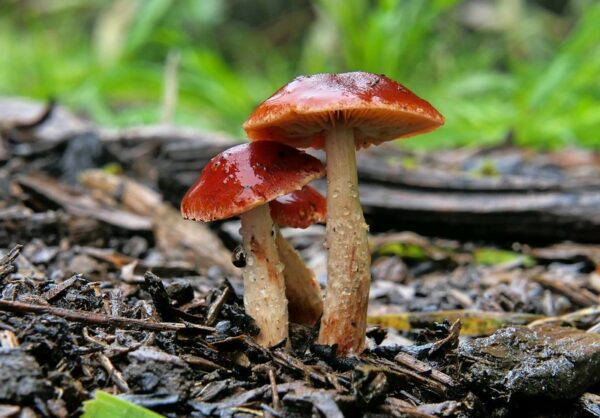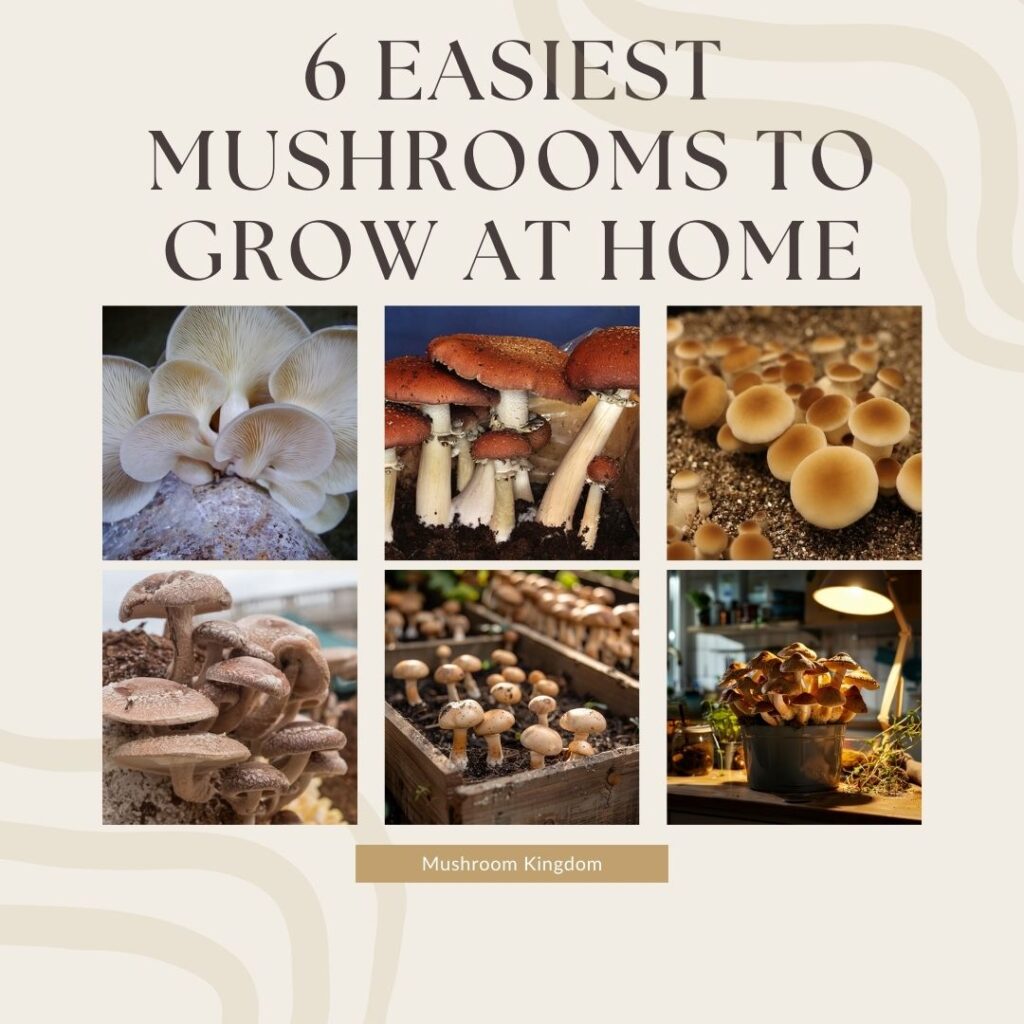This guide provides an in-depth look into the world of Leratiomyces fungi, answering common questions and providing detailed information about its biology, habitat, and significance.

What is Leratiomyces?
This fungi belongs to the family Strophariaceae. You can often find this fungi in wood chips, gardens, and other organic-rich environments. Their fruiting bodies, commonly known as mushrooms, can vary in appearance but typically have a cap and stem structure.
Where You Can Find Leratiomyces?
These fungi are cosmopolitan, meaning you can find them worldwide. They thrive in environments rich in organic matter.
You can often find them in mulch, wood chips, and compost heaps.
They are particularly common in urban areas where wood-based mulches are frequently used in landscaping.
How to Identify Leratiomyces Fungi?
Identifying this blue fungi requires careful observation of several key features. Here’s a detailed guide to help you accurately identify these mushrooms:

Habitat
Firstly, note where the mushroom is growing. This fungi thrives in environments rich in organic material. You often find them in:
- Wood Chips: These fungi are common in mulched areas, especially in urban settings.
- Mulch: Landscaped gardens frequently provide the perfect habitat for these mushrooms.
- Compost: Decaying organic matter in compost heaps can also harbor Leratiomyces.
By understanding their preferred habitats, you can narrow down the possibilities when you encounter mushrooms in these environments.
Cap and Stem
Next, observe the cap and stem of the mushroom. These features offer significant clues for identification:
- Cap: Look at the color, shape, and texture of the cap. Leratiomyces caps can range from bell-shaped to convex and are often sticky or slimy when wet. Their colors typically include shades of brown, tan, or reddish hues.
- Stem: Examine the stem’s color and texture. The stem is usually sturdy and may have fibrous remnants of the mushroom’s veil. Colors can vary but often match the cap or are slightly lighter.
By closely examining these aspects, you can gather essential information about the mushroom’s identity.
Gills and Spore Print
After inspecting the cap and stem, turn your attention to the gills and spore print:
- Gills: Look at the color and attachment of the gills under the cap. Leratiomyces gills are usually dark, ranging from brown to nearly black. They may be adnate (attached directly to the stem) or slightly decurrent (running down the stem).
- Spore Print: To obtain a spore print, place the cap gill-side down on a piece of paper and leave it for several hours. The spores that fall will create a print, typically in purplish-brown to black shades.
These characteristics are crucial for distinguishing it from other similar fungi.
Is Leratiomyces Edible?
The edibility varies. Some species within this genus are considered inedible or mildly toxic. It’s crucial not to consume wild mushrooms unless you are absolutely certain of their identity and safety.
So, always consult a mycologist or a reliable field guide before considering any wild mushrooms for consumption.
Is Leratiomyces Ceres Psychedelic?
This blue fungi is not considered a psychedelic mushroom. While it has an interesting appearance, it does not contain the psychoactive compounds which are responsible for the hallucinogenic effects in certain mushrooms.
Psychedelic mushrooms contain specific compounds that cause hallucinations and altered states of consciousness.
The most well-known of these compounds are psilocybin and psilocin, found in genera such as Psilocybe, Panaeolus, and Gymnopilus. Leratiomyces ceres does not produce these compounds, so it does not have the psychoactive effects associated with psychedelic mushrooms.
What Are the Health Benefits or Risks of Leratiomyces?
Currently, there is limited information on specific health benefits associated with Leratiomyces fungi. However, like other fungi, they contribute to soil health and nutrient cycling, indirectly benefiting human health by promoting healthy plant growth.
As for risks, some Leratiomyces species might be mildly toxic, so caution is advised when handling or consuming wild mushrooms.
How Can You Differentiate Leratiomyces from Other Similar Fungi?
To differentiate Leratiomyces from similar fungi, pay attention to the following aspects:
- Spore Color: Leratiomyces typically has purplish-brown to black spores.
- Habitat: They are commonly found in wood chips and urban mulch, which can help distinguish them from fungi in different habitats.
- Morphological Features: The combination of cap texture, gill color, and stem characteristics can help differentiate them from other genera.
What Are Some Interesting Facts About Leratiomyces?
Here are some facts about this mushroom that you may find interesting:
- Urban Ecology: Leratiomyces is well-adapted to urban environments, often appearing in newly landscaped areas.
- Symbiosis: While primarily saprophytic (decomposing dead organic material), some Leratiomyces species might engage in symbiotic relationships with plants.
- Species Diversity: The genus Leratiomyces includes several species, each with unique traits and ecological roles.
Conclusion
Leratiomyces fungi are an intriguing group of mushrooms with significant ecological roles. They contribute to the decomposition of organic matter, enriching the soil and supporting plant life.
While not typically consumed, their presence in urban and natural environments highlights their adaptability and importance in nutrient cycling.
Whether you’re a mycology enthusiast or a casual observer, understanding Leratiomyces enhances your appreciation of the complex world of fungi.
. From their distinctive morphological features to their essential role in decomposition, Leratiomyces fungi are a remarkable example of nature’s intricacy and interdependence.


